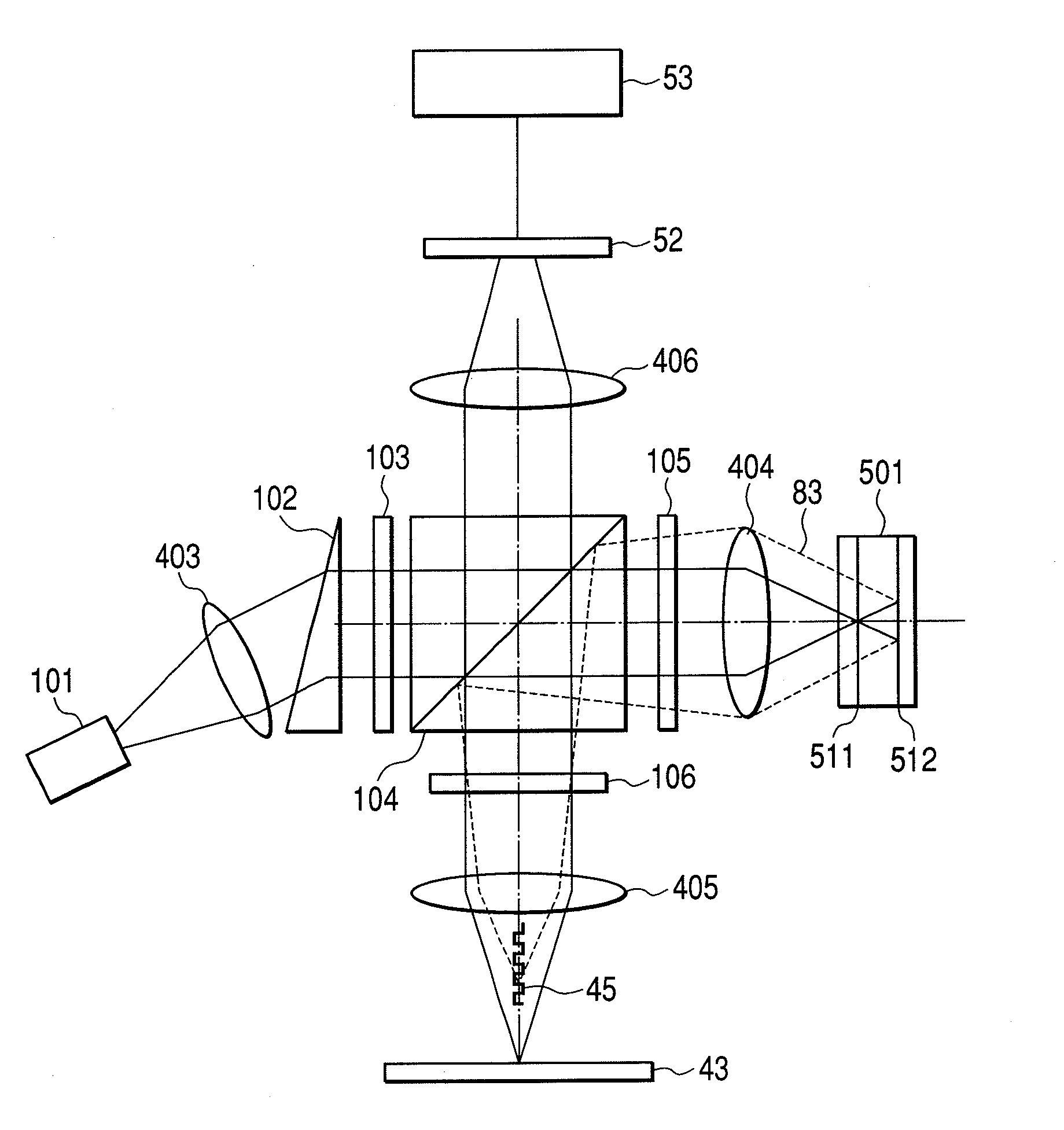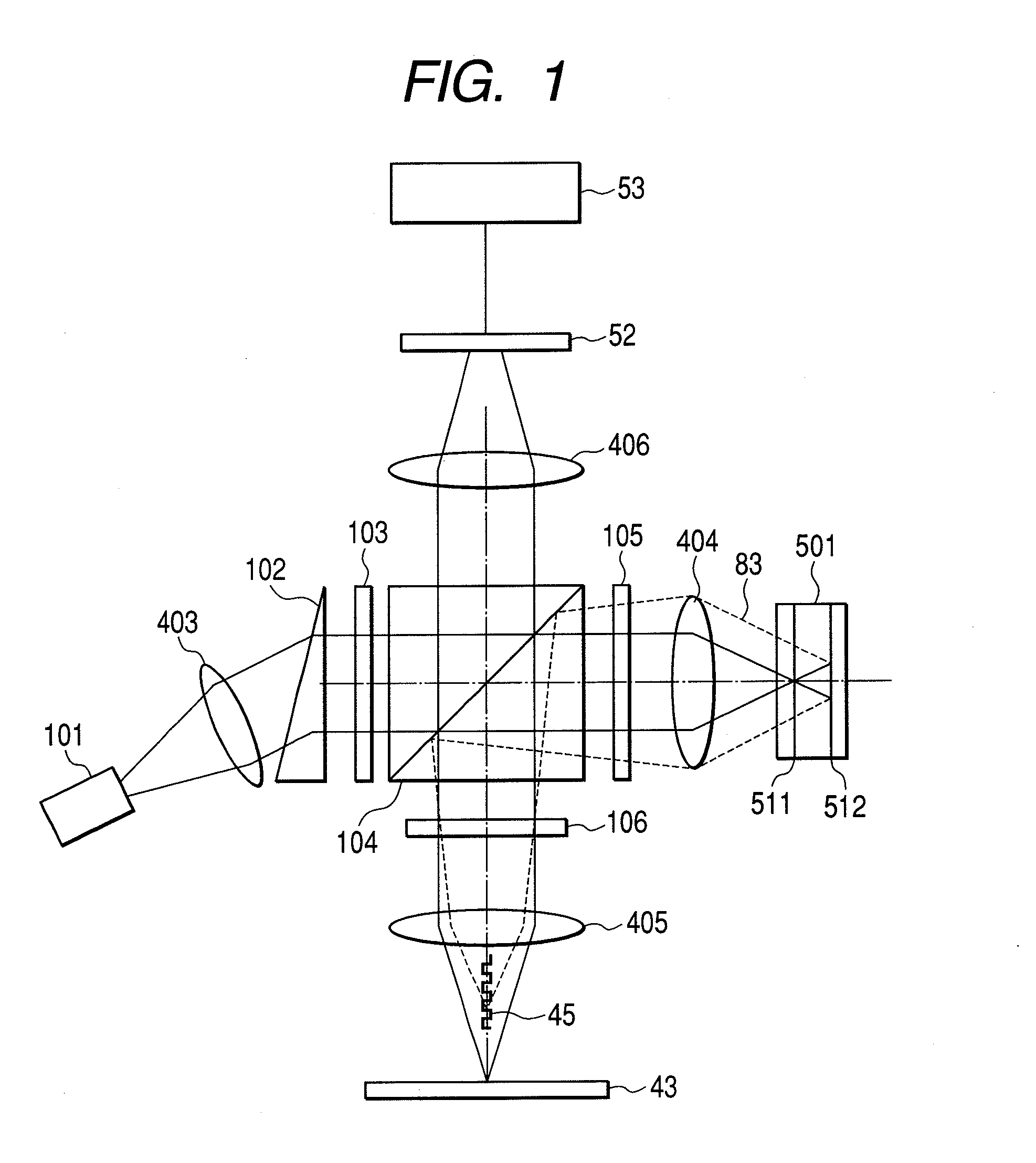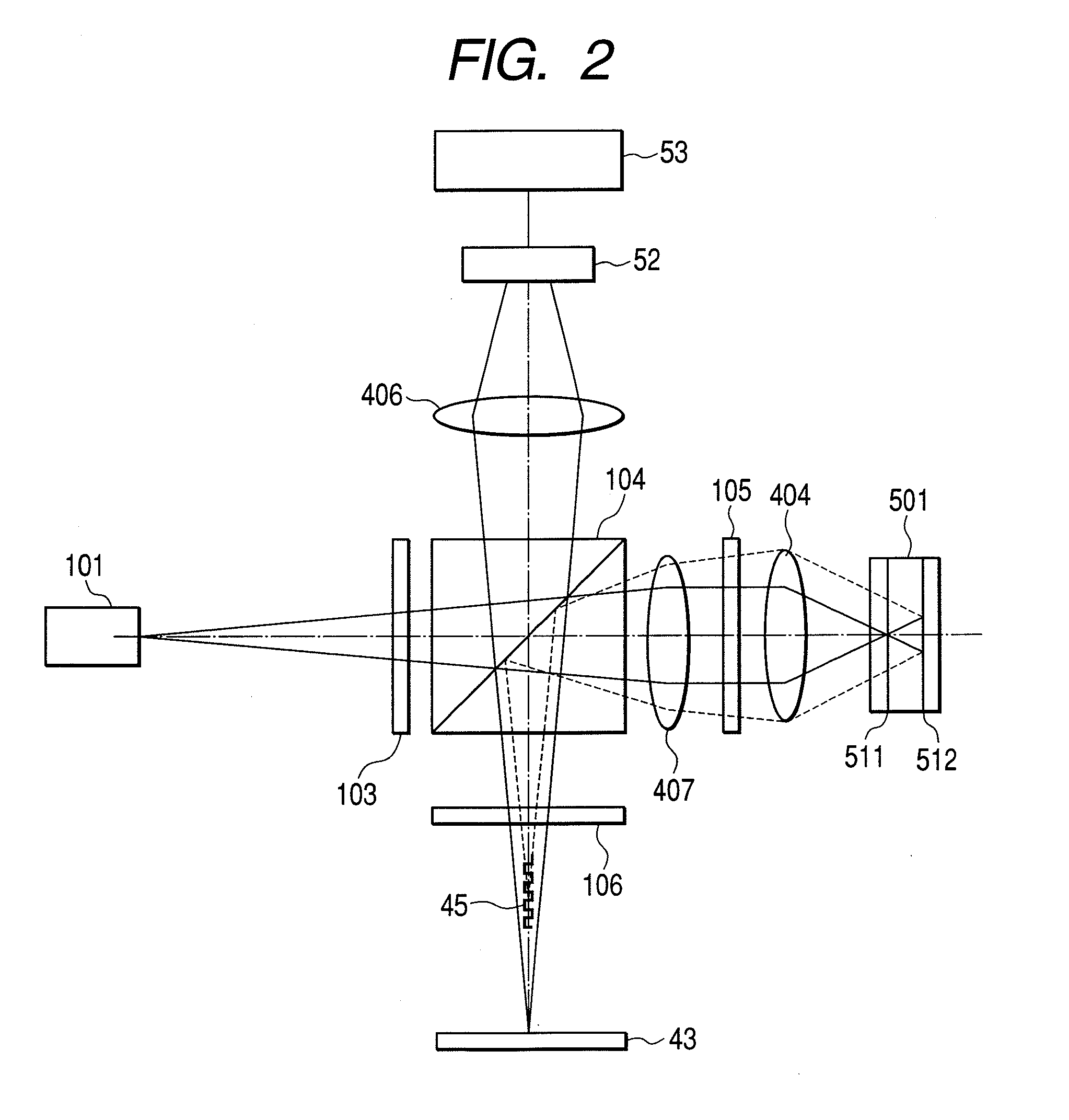Opitcal pickup
a technology of optical pickup and optical axis, which is applied in the field of optical pickup, can solve the problems of deteriorating an error rate in reading data, unbalanced tracking signal, and jitter in the rf signal, so as to reduce the jitter of a data signal, improve the reliability of read data, and reduce the effect of reflected light from an adjacent layer
- Summary
- Abstract
- Description
- Claims
- Application Information
AI Technical Summary
Benefits of technology
Problems solved by technology
Method used
Image
Examples
first embodiment
[0064]FIG. 1 shows an optical system of an optical pickup according to a first embodiment of the invention. A laser beam radiated from a semiconductor laser 101 is converted into a circular collimated light beam by a collimator lens 403 and a triangular prism 102. The collimated beam is split into three beams by a diffraction grating 103 to be one main beam and two subbeams. The traveling direction of the main beam is the same as that of an incident beam; however, the subbeams are turned outgoing beams having a certain gradient on both sides of an optical axis. Normally, difference in the quantity of light between the main beam and the subbeam is set to 10 times or more. The three beams are transmitted in a polarizing beam splitter 104, are converted into circularly polarized waves by a quarter-wave lambda plate 105, and are focused on a multi-layer disc 501 rotated by a rotating mechanism by an objective lens 404. In this case, a two-layer disc is shown as the multi-layer disc 501;...
second embodiment
[0070]FIG. 2 shows an optical system of an optical pickup according to a second embodiment of the invention. In this embodiment, a diffraction grating 103 and a polarizing beam splitter 104 are installed on the side of a semiconductor laser 101 at the back of a collimator lens 407. Therefore, a laser beam outgoing from the semiconductor laser 101 is transmitted in the polarizing beam splitter 104 in a divergent state, afterward, is collimated by the collimator lens 407, and is incident on a quarter-wave lambda plate 105. In the first embodiment, as the diffraction grating 103 and the polarizing beam splitter 104 are installed between the collimator lens 403 and the objective lens 404, the condenser lens 405 is required; however, in the second embodiment, as shown in FIG. 2, as a light beam reflected from a reading layer 511 of a multi-layer disc 501 is converged through the collimator lens 407, no condenser lens is required. Hereby, effect that the number of parts can be reduced is ...
third embodiment
[0071]FIG. 22 shows an embodiment of an optical disc drive that can reduce the variation of a sub push-pull signal (SPP). Circuits 711 to 714 are provided to record data on a multi-layer optical disc 501. In the encoding circuit for error correcting 711, an error correcting code is added to data. The recording encoding circuit 712 modulates data according to a 1-7PP method. The recording compensating circuit 713 generates a pulse for writing suitable for mark length. A semiconductor laser in an optical pickup 60 is driven based upon a generated pulse string by the semiconductor laser driving circuit 714 and a laser beam 80 outgoing from an objective lens is modulated. A phase change film is formed on the optical disc 501 rotated by a motor 502, when the phase change film is heated and is rapidly cooled, it is turned amorphous, and when the phase change film is slowly cooled, it is turned crystalline. These two states are different in reflectance and a mark can be generated. As in wr...
PUM
 Login to View More
Login to View More Abstract
Description
Claims
Application Information
 Login to View More
Login to View More - R&D
- Intellectual Property
- Life Sciences
- Materials
- Tech Scout
- Unparalleled Data Quality
- Higher Quality Content
- 60% Fewer Hallucinations
Browse by: Latest US Patents, China's latest patents, Technical Efficacy Thesaurus, Application Domain, Technology Topic, Popular Technical Reports.
© 2025 PatSnap. All rights reserved.Legal|Privacy policy|Modern Slavery Act Transparency Statement|Sitemap|About US| Contact US: help@patsnap.com



